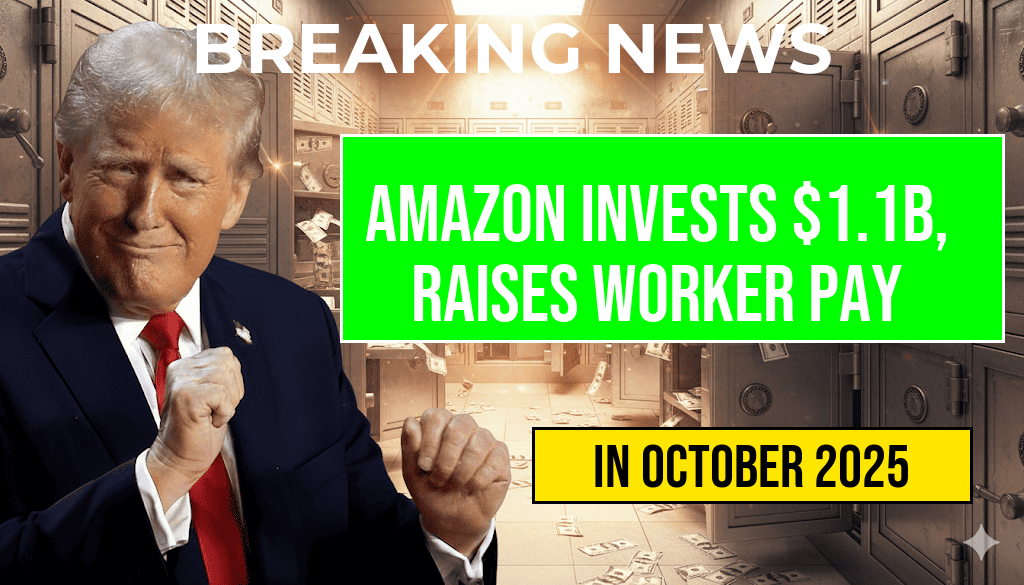Amazon announced a significant investment of $1.1 billion aimed at elevating wages and improving conditions for its fulfillment center workers across the United States. As part of this strategic move, the retail giant has increased the average pay for its fulfillment employees to over $23 an hour. This milestone reflects Amazon’s ongoing efforts to address labor concerns, attract talent amid a competitive job market, and enhance operational efficiency. The investment is expected to benefit thousands of workers, providing not only higher wages but also additional benefits and career growth opportunities. The move underscores Amazon’s commitment to reshaping its labor practices while maintaining its position as one of the country’s leading employers in the logistics sector.
Details of the Investment and Wage Increase
Amazon’s announcement detailed an infusion of $1.1 billion directed toward employee compensation and workplace improvements. This funding is part of a broader initiative announced earlier this year, emphasizing fair wages and better working conditions at fulfillment centers nationwide.
Impact on Fulfillment Workers
Following the investment, the average hourly wage for fulfillment workers has risen to over $23. This increase means that many employees are now earning significantly more than the federal minimum wage and are positioned competitively within the logistics industry. Amazon has also stated that the pay raise applies to both full-time and part-time workers, including seasonal employees during peak periods.
| Period | Average Hourly Pay |
|---|---|
| Before Investment | $18.50 |
| After Investment | Over $23 |
The company reports that these wage adjustments are coupled with improvements in benefits, such as enhanced health care options, paid time off, and career advancement programs. Amazon emphasizes that these changes are part of a long-term strategy to foster a more sustainable and attractive work environment.
Broader Industry Implications
Amazon’s wage hike signals a shift in the logistics and e-commerce sectors, where companies are increasingly competing for skilled labor amid a tight labor market. The retail giant’s move comes amid broader discussions about workers’ rights and fair compensation in the warehousing industry, which has faced scrutiny over working conditions and pay disparities.
Competitive Landscape and Labor Market Trends
As e-commerce continues to surge, especially during seasonal peaks and global disruptions, fulfillment centers have become critical nodes in supply chains. According to data from the U.S. Bureau of Labor Statistics (BLS), logistics employment has grown steadily, but companies face pressure to offer competitive wages to retain staff.
Some industry analysts suggest that Amazon’s increased investment could pressure competitors to reevaluate their compensation packages, potentially leading to broader shifts across the sector. However, critics argue that higher wages should be accompanied by improvements in working conditions and job security, areas where the industry still faces challenges.
Worker Perspectives and Corporate Responsibility
Union advocates and labor groups have welcomed Amazon’s wage increase, viewing it as a step toward better recognition and valuation of fulfillment workers. Nonetheless, some employees and labor advocates continue to call for more comprehensive reforms, including transparency around warehouse safety and workload management.
Amazon’s Response and Future Plans
In a statement, Amazon highlighted its commitment to investing in its workforce as essential to its ongoing growth and innovation. The company plans to expand training programs, promote internal mobility, and implement new safety protocols across its facilities.
As the largest private employer in the United States, Amazon’s decisions often set industry standards. The company’s recent wage increase underscores the importance of balancing operational efficiency with fair labor practices, a challenge that will likely shape its policies moving forward.
Implications for the Broader Economy
Higher wages at such a scale could influence wage standards across other sectors, especially retail and logistics. Economists observe that increased consumer spending driven by better wages can stimulate economic growth, although concerns about inflationary pressures persist.
For more information on Amazon’s workforce initiatives, visit their official news release. Additionally, insights into the logistics labor market are available through the Wikipedia page on logistics.
Frequently Asked Questions
What is the total amount Amazon has invested to improve fulfillment workers’ pay?
Amazon has invested a total of 1.1 billion dollars to boost the wages of its fulfillment workers.
How has Amazon’s investment impacted fulfillment workers’ average pay?
As a result of the investment, the average pay for Amazon’s fulfillment workers has increased to over twenty-three dollars an hour.
Which areas or regions are affected by Amazon’s pay increase?
The pay increase applies to fulfillment centers across various regions where Amazon operates, enhancing compensation for workers nationwide.
What are the potential benefits of this pay boost for Amazon employees?
This pay increase aims to improve worker satisfaction, reduce turnover, and attract more talent to Amazon’s fulfillment centers.
Does Amazon’s investment in wages reflect a broader commitment to employee welfare?
Yes, this significant investment demonstrates Amazon’s commitment to employee welfare by providing competitive wages and improving working conditions.






